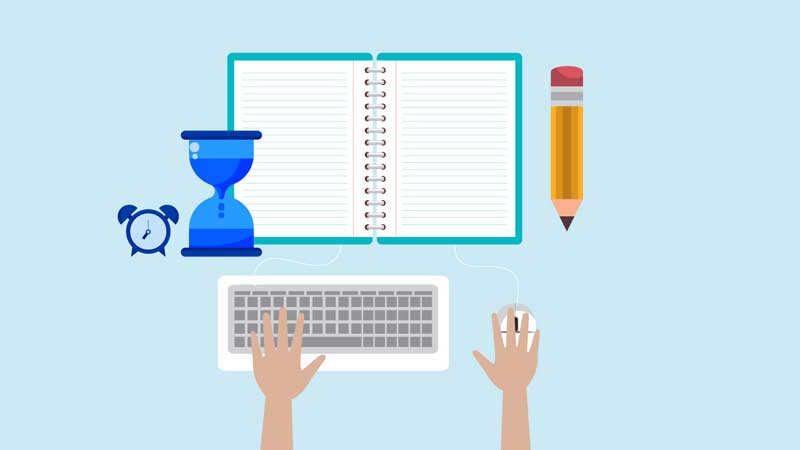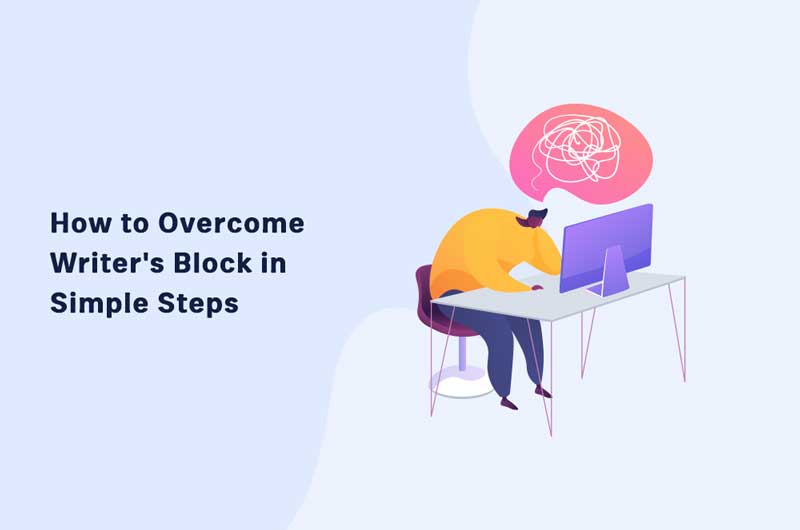Increasing writing speed involves a complex interplay of factors, including environmental optimization, process efficiency, and the employment of various technological tools. This article dissects these components, offering pragmatic insights and strategies to help you learn how to write faster.
We will examine existing writing processes, discuss goal-setting, delve into creating conducive writing environments, and explore using specific writing techniques and tools.
The objective is to provide a comprehensive guide that equips individuals with practical methods to improve their writing efficiency, thereby enhancing overall productivity in their writing endeavors.
How to Write Faster
Here are the main steps and techniques to help you increase your writing speed and writing flow.
Understand Your Current Writing Process
Understanding your current writing process is the first step in improving your writing skills.
Self-Analysis of Writing Habits
Observing and noting one’s writing patterns includes understanding when you are most productive, the typical duration of your writing sessions, and how often you are interrupted. The goal here is not to critique but to better understand your writing rhythms and habits.
Key things to consider:
- Time of day for peak productivity
- Duration of writing sessions
- Frequency of interruptions
Identifying Bottlenecks
Identifying bottlenecks in your writing process is another step. These are points where your workflow gets interrupted or slowed down. Common bottlenecks include spending too much time on research, struggling to organize thoughts, or over-editing while writing.
Assess the tools you use – both physical and digital – and consider whether they are contributing to or alleviating these bottlenecks.
Common bottlenecks to notice:
- Common bottlenecks: Research, organizing thoughts, excessive editing
- Evaluation of writing tools
Assessing Writing Efficiency
Efficiency in writing is measured by how much quality content you produce in a given timeframe. This step involves identifying factors that may be hindering your writing efficiency. These range from lack of preparation and unclear writing objectives to physical discomfort during writing sessions.
Key elements for assessing writing efficiency:
- Measuring quality writing produced within a specific timeframe
- Factors affecting efficiency: Preparation, objectives, physical comfort
Psychological Aspects of Writing
The mental and emotional aspects play a significant role in your writing speed. This includes addressing stress, lack of confidence, and mental fatigue. Understanding and managing these psychological barriers are essential for improving the writing process.
Psychological aspects to be aware of:
- Impact of stress, confidence, and mental fatigue on writing
Setting Goals & Planning
Setting achievable goals is crucial for enhancing writing speed. Begin by defining what you aim to accomplish in each writing session. Goals should be specific, measurable, attainable, relevant, and time-bound (SMART).
This clarity helps maintain focus and provides direction throughout the writing process.
Consider these factors when setting your writing goals:
- Define the purpose of each writing session
- Set realistic word count or page targets
- Allocate a specific time frame for achieving these goals
Effective Planning & Structuring
Once goals are set, planning how to achieve them becomes the next step. Effective planning involves breaking down the writing task into smaller, manageable parts. Create a roadmap or outline for your writing project.
The outline should detail the main points or sections and provide a coherent structure.
Key components in planning your writing:
- Break down the writing task into smaller sections
- Develop a detailed outline or roadmap for the project
- Schedule writing tasks in alignment with your most productive times
If you’re writing a book or a screenplay, use premade templates provided by Squibler. These templates provide everything you need to kickstart your writing.
Prioritizing Tasks
Prioritization is essential, especially when working on larger projects or handling multiple writing assignments. Identify the most critical tasks and tackle them first. The approach ensures that the most important parts of your writing get the attention they need early on.
Strategies for prioritizing your writing tasks:
- Determine which sections or aspects of the writing are most crucial
- Tackle high-priority tasks during your peak productivity periods
- Use deadlines to guide the prioritization of writing tasks
Regular Review & Adjustment of Goals
The writing process is unpredictable, and goals may need adjustments. Review your writing progress and be flexible in adjusting your goals and plans as needed.
Flexibility helps manage unexpected challenges and ensures your writing goals remain achievable and relevant.
Tips for reviewing and adjusting your writing goals:
- Assess your progress towards set goals
- Be prepared to modify goals in response to new information or challenges
- Adjust your writing plan to stay aligned with updated goals
Squibler also has an option to set up and track writing goals. Set the goals according to your plan and writing flow to maximize your writing speed.
Goals provide a structured approach, keep you focused, and ensure you work towards achievable targets. Reviewing and adjusting these goals helps maintain relevance and achievability throughout the writing process.
Creating an Ideal Writing Environment
The physical environment where you write impacts your ability to write quickly and efficiently. It is important to create a space that minimizes distractions and maximizes comfort. This might mean different things for different people, so it’s essential to understand what works best for you.
Key elements to consider for your physical writing space:
- Choose a quiet and comfortable location
- Ensure good lighting and ergonomic seating
- Keep necessary writing tools and resources within reach
Managing Digital Distractions
One of the biggest writing challenges is the constant barrage of digital distractions. Managing involves turning off notifications, using apps that block distracting websites, or setting specific times to check emails and messages.
Strategies to minimize digital distractions:
- Turn off notifications on your phone and computer
- Use website blockers during writing sessions
- Allocate specific times for checking emails and social media
Creating a Routine & Atmosphere
A consistent writing routine signals your brain that it’s time to focus and write. This includes specific rituals or setups that help get you into the writing zone.
Additionally, the atmosphere of your writing space influences your productivity.
Ways to establish a conducive writing routine and atmosphere:
- Stick to a consistent writing schedule
- Use rituals like brewing a cup of tea or playing background music to signal writing time
- Personalize your space with items that inspire and motivate you
Balancing Isolation & Interaction
While isolation can benefit writing, balancing this with interaction is important. Interaction provides new ideas and perspectives, helping to overcome writer’s block or providing a much-needed break from intensive writing sessions.
Tips for balancing solitude and interaction:
- Schedule short breaks to interact with others or engage in different activities
- Join writing groups or online forums for periodic engagement
- Use interaction as a tool for inspiration and refreshment
Creating an ideal writing environment is a crucial step in writing faster. It involves tailoring your physical and digital space, establishing a routine and atmosphere that fosters concentration, and finding the right balance between isolation and interaction.
A personalized environment helps improve your writing speed and efficiency.
Improving Typing Speed & Efficiency
Mastering the keyboard is a fundamental skill for learning how to write faster. Efficient typing minimizes the time spent translating thoughts into text, impacting your writing speed. However, honing typing skills requires deliberate practice and targeted strategies.
Assessing Your Current Skill Level:
- Typing Test: Begin by taking online typing tests to gauge your current speed and accuracy. Popular options include TypingClub, 10FastFingers, and NitroType.
- Common Bottlenecks: Analyze your typing test results and identify recurring errors or specific key combinations causing delays. This self-assessment helps prioritize areas for improvement.
Targeted Practice Strategies:
- Touch Typing Mastery: Learning proper finger placement and touch typing techniques builds a strong foundation for efficient typing. Online platforms like Keybr and Ratatype offer interactive lessons and exercises to cultivate touch typing habits.
- Focused Drills: Once comfortable with basic key placements, engage in targeted drills focusing on specific key combinations or tricky letters. Numerous websites offer customizable drill sets catered to individual needs.
- Progressive Speed Challenges: Gradually increase typing speed while maintaining accuracy through dedicated speed drills. Utilize online tools like Typeracer or NitroType’s Race mode to gamify speed practice and track progress.
While aiming for increased speed, accuracy remains paramount. Prioritize accuracy throughout your practice, and increase your typing speed while maintaining a low error rate.
Rushing your practice leads to ingrained bad habits and hinders progress.
Ergonomics & Equipment
Invest in a comfortable ergonomic keyboard and adjust your posture to minimize typing-related fatigue and strain. Proper wrist support and neutral hand positioning are crucial for long-term comfort and sustained performance.
Software
Explore text-prediction software or dictation tools to optimize your typing workflow further. These tools suggest words or transcribe your speech to text, increasing your writing output.
Another wise investment is spelling and grammar checkers.
Remember, consistent practice is key to unlocking your full typing potential. Dedicate short but regular practice sessions throughout your day to solidify your skills and witness a steady improvement in your typing speed and efficiency.
As your fingers dance across the keyboard with increasing agility, you’ll see a direct boost in your overall writing speed and productivity.
Research & Information Organization
By developing efficient research and information organization strategies, you minimize time spent sifting through data and maximize the incorporation of relevant findings into your writing, boosting speed and quality.
Here are some practical steps to conquer the information deluge:
Defining Your Research Scope
Here are things to consider for understanding the research scope.
- Precise Focus: Define your topic and research questions before initiating your research. Narrow your focus to specific aspects you want to explore, ensuring targeted research and preventing irrelevant detours.
- Keyword Refinement: Craft precise search terms by understanding key concepts and their synonymous counterparts. Utilize filters and advanced search techniques within databases and search engines to identify relevant and reliable sources.
Gathering Information
Here’s how to gather information:
- Source Diversification: Utilize a variety of information sources. Consult academic journals, reputable websites, credible news articles, and expert opinions. Explore primary sources like research papers and historical documents for original accounts and unique perspectives.
- Purposeful Note-Taking: Develop an effective note-taking system tailored to your needs. Annotate digital sources, use note cards for physical materials or employ dedicated software. Capture key points, quotes, and paraphrases, including source information for proper citation.
- Essence Extraction: Distill the information into manageable chunks. Summarize key arguments, identify opposing viewpoints, and extract relevant data like statistics or case studies. Focus on understanding the core message of each source before moving on.
Organizing & Analyzing Findings
The next step is to organize and analyze your findings:
- Mind Mapping: Utilize mind mapping to visualize connections between your research findings. This technique helps group related information, identify knowledge gaps, and establish a clear hierarchy of ideas.
- Digital Database Management: Leverage reference management software like Zotero or Mendeley to store and organize your research materials. Categorize entries, tag keywords, and utilize citation generators for effortless referencing.
- Outlining and Structuring: Translate your research findings into a clear outline. Organize your points, ensuring smooth flow within your written piece. This pre-planning phase saves time during the writing process and eliminates unnecessary backtracking.
Critical Evaluation & Synthesis
Finally, you must evaluate:
- Source Credibility Assessment: Always scrutinize the credibility of your sources. Verify the author’s expertise, check publication dates and potential bias, and examine methodologies employed in research papers.
- Fact-Checking and Cross-Referencing: Don’t accept information at face value. Cross-reference findings with multiple sources, verify statistics, and avoid relying on anecdotal evidence.
- Synthesize and Analyze: Go beyond recording information. Analyze the data, identify patterns and connections, and form your interpretations and conclusions based on your research.
Effective research and information organization are ongoing processes. Revisit your search terms, refine your focus, and evaluate the relevance and credibility of your sources.
By gathering, organizing, and analyzing information, you transform overwhelming data into a springboard for insightful writing, propelling you toward speed and success.
Writing Methods & Tools
Various writing techniques and tools enhance your writing speed and overall workflow. Choosing the right strategy depends on your writing style and preferences, but exploring these options unlocks new productivity levels.
Methodologies for Focused Writing
Here are the most popular methods that improve writing skills and help you write faster:
- Pomodoro Technique: Break down your writing sessions into focused 25-minute intervals with short breaks. This technique promotes sustained concentration and prevents burnout.
- Freewriting: Stream of consciousness writing where you continuously write without stopping or self-editing. This free-flowing method unleashes creativity and helps overcome writer’s block.
- Mind Mapping: Visually organize your thoughts and ideas around a central topic. This non-linear approach sparks new connections and enhances brainstorming.
Software & Tools for Enhanced Writing
Next, let us review tools beyond usual writing software, such as Google Docs and Microsoft Word.
- Word Processors with Focus Mode: Use applications like FocusWriter or Ulysses, which minimize distractions by hiding menus and toolbars, promoting full-screen immersion in your writing.
- Voice-to-Text Software: Consider dictation tools like Dragon or Google Docs dictation to convert your spoken words into text. This is helpful for fast-paced thinkers or those struggling with typing speed.
- Grammar and Style Checkers: Tools like Grammarly or ProWritingAid provide real-time feedback on grammar, punctuation, and style, helping you maintain accuracy and polish your writing without interrupting your flow.
- AI Writing Tools: Specialized tools, such as Squibler AI, reduce the time by providing ideas, suggestions, and templates so you can focus on writing.
Developing a Concise Writing Style
Crafting concise prose is not just about learning how to write faster; it’s about crafting impactful writing that resonates with your reader.
Here are some essential tips to refine your style and ensure your message shines through.
Tips for Clear Writing
Here are writing tips that everyone must know before they start writing:
- Active Voice First: Prioritize active voice constructions. Sentences like “The researcher analyzed the data” are stronger and clearer than “The data was analyzed by the researcher.”
- Precise Word Choice: Opt for specific and impactful words. Replace weak verbs with stronger alternatives (“walked” to “strutted”), and remove unnecessary adverbs (“slightly damp” to “damp”).
- Conciseness is Key: Eliminate redundancy and fluff. Avoid overused phrases (“at this point”) and unnecessary qualifiers (“maybe” or “possibly”).
- Sentence Length Variation: Intermix sentence lengths to keep your reader engaged. Short, punchy sentences add emphasis, while longer sentences provide nuance.
- Structure for Comprehension: Organize your thoughts. Use transitions and clear headings to guide your reader through your argument.
Avoiding Over-Editing in the Initial Phase
Resist the urge to over-edit during the initial writing phase. While polishing is crucial, excessive editing stifles your flow. Here’s why:
- Embrace the Rough Draft: The first draft is about getting your ideas on paper, not perfection. Don’t get bogged down in grammar and syntax; focus on capturing your thoughts and building your overall structure.
- Edit: Schedule separate dedicated editing sessions later in the process. This allows you to approach your work with fresh eyes and focus on specific aspects like clarity, cohesion, and flow.
- Maintain Momentum: Over-editing kills writing momentum. Prioritize completing your first draft, leaving the fine-tuning for later.
Concise writing is not about writing short sentences or stripping your work of all emotion. It’s about communicating your ideas while respecting your reader’s time and attention.
FAQs
Here are the most frequently asked questions about learning how to write faster.
How can I save time in my writing process?
Planning your writing helps you with writing fast and with the editing process. Outlining beforehand gives you a roadmap, and tools like website blockers keep distractions at bay. Consider dictation software and grammar checkers for efficiency, and don’t forget to practice typing for smoother idea flow.
Why avoid over-editing during the initial writing phase?
Over-editing stalls your creativity. Get your ideas down and imperfections, then schedule separate editing sessions with fresh eyes. Remember, the first draft is about getting started, not perfection!
How can I build a writing habit even when I’m busy?
Start small and make it realistic. 15 minutes a day adds up. Integrate writing into your routine, like mornings or lunch breaks. Find a writing community or accountability partner for support, and remember, consistency is key – even the little bits matter.
Can I write fast without sacrificing quality?
Knowing your topic helps with fluency, and freewriting gets ideas flowing. Challenge yourself with word count goals, and study the work of fast writers for adaptable techniques. Remember, writing is a skill – the more you do it, the better and faster you’ll become.












